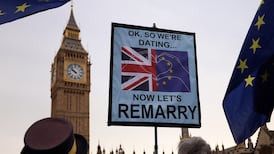Children may be less likely to fall ill with coronavirus, but they are acutely vulnerable to the wider effects of the pandemic.
It has become clear as Covid-19 has spread across the world that children account for a very small proportion of reported cases. A growing body of scientific literature suggests this is not necessarily because they are less susceptible to acquiring the infection, or carry a lower viral load, but that they are more likely to be asymptomatic and experience milder symptoms. What is less clear, however, is the role that children play in spreading the infection. For governments across the globe, the answer to that question will determine when and how schools can reopen – and, by extension, when economic life can resume.
In a helpful paper summarising international evidence on the topic, the Health Information and Quality Authority (Hiqa) points out that very few definitive cases of virus transmission from children have been published to date. From the small number of published studies, “it appears that children are not, to date, substantially contributing to the household transmission” of Covid-19, it states. One study analysed by Hiqa suggestions transmission in schools is also very low.
Citing the Hiqa report and separate comments by a WHO official, Taoiseach Leo Varadkar said reopening schools for children was "among the safest things" that the State could do. His enthusiasm contrasted with the caution of chief medical officer Tony Holohan, who advised against reading too much into evidence from a small number of studies, each with small samples.
That’s sensible, given the gaps in our knowledge. However, the decision as to when schools should reopen cannot be based solely on estimates of the transmission rate. The longer schools remain closed, the more harm it will do. Younger children are missing out on vital socialisation and developmental opportunities. Older children are deprived of classes at key moments, which could hold them back down the line. The cost of losing out on school is even greater for disadvantaged children, who may live in cramped and unsuitable conditions and be unable to study at home. For some, home may not be a safe place. And while developers can lobby Government to reopen building sites, and parents can vent on Liveline about the inconvenience of the home-office, children have no real voice in public debate.
Ireland is taking a very cautious approach to reopening its schools. Classes resumed in several European states, such as France, this week. Other countries never closed their schools. Here, under the current schedule, no child will sit in a classroom until the autumn. It may be that the risk of increased virus transmission will keep their doors closed for some time. But any such decision must also weigh up the harm that is done by keeping our children at home.









